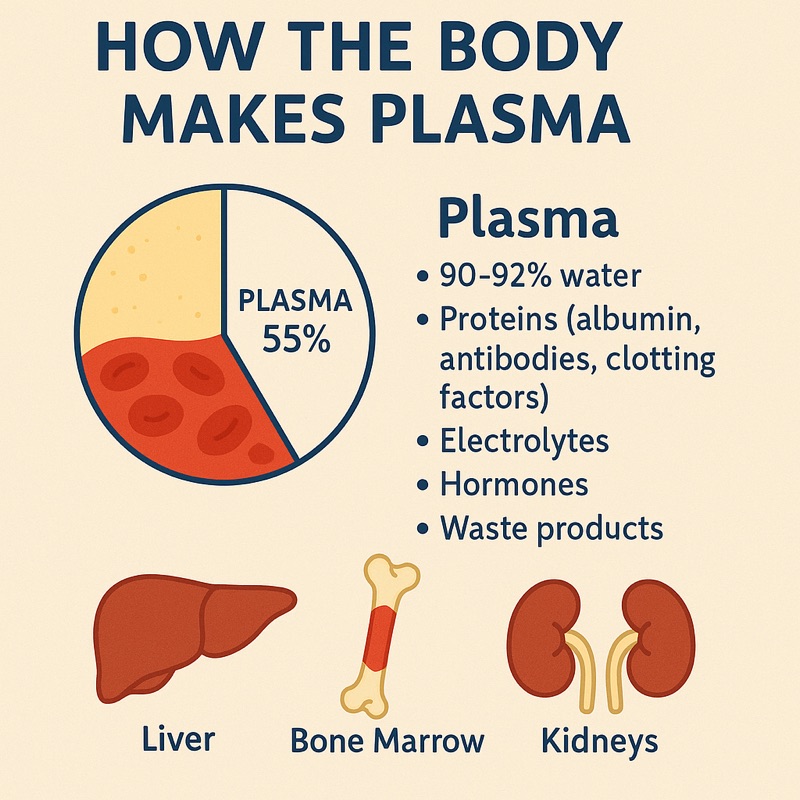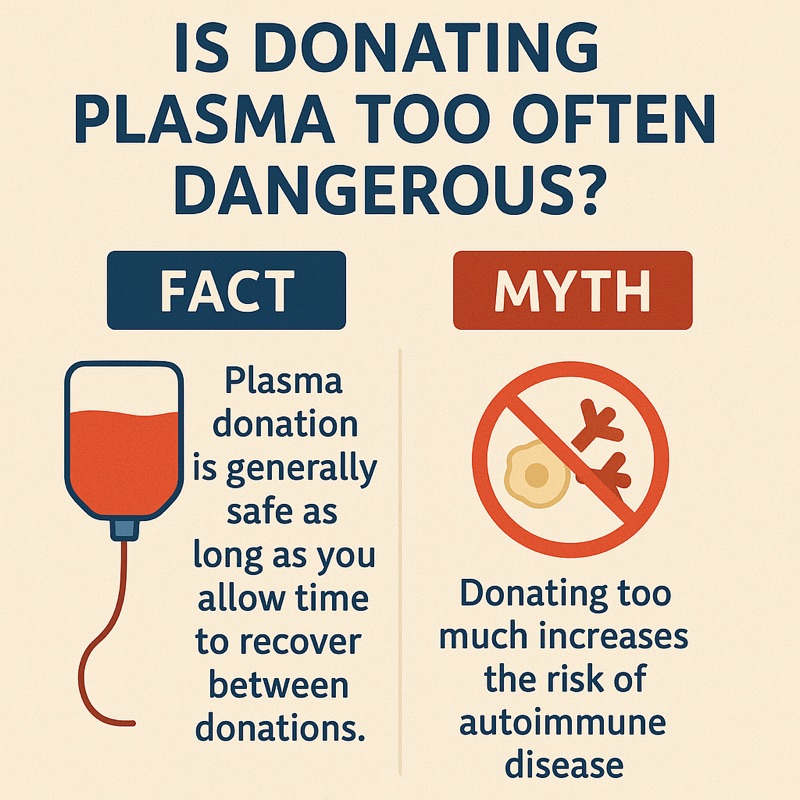🩸 How Does the Body Make Plasma?

Plasma is the liquid part of your blood, making up about 55% of its volume. It’s mostly water (90-92%), but also contains:
- Proteins (like albumin, antibodies, clotting factors)
- Electrolytes
- Hormones
- Nutrients
- Waste products
Your liver, kidneys, bone marrow, and immune system all play a role in producing the components of plasma.
- Liver makes most plasma proteins (like albumin and clotting factors)
- Bone marrow produces blood cells, which float in plasma
- Kidneys help regulate water and electrolyte balance in plasma
The body absorbs water and nutrients from food and fluids to constantly rebuild plasma.
🔁 How Quickly Do We Remake Plasma?
Very fast!
- Your body can replace the plasma lost in a donation within 24 to 48 hours.
- Full restoration of plasma proteins may take a few days (up to 2 days for frequent donors).
To help your body recover faster:
- Stay hydrated
- Eat a protein-rich diet
- Get good rest
📅 How Often Can You Donate Plasma?
In the United States, the FDA allows plasma donation up to twice per week, with at least 48 hours between donations.
- That means up to 8 times per month, if spaced out properly.
- Many plasma centers recommend no more than 104 donations per year.
⚠️ If you’re underweight, iron-deficient, or dehydrated, you may be deferred from donating temporarily.
⚠️ What Happens If You Donate Plasma Too Often?
Plasma donation is generally safe, especially when you follow medical guidelines (max 2 times per week with at least 48 hours in between). But excessive or unsupervised donation—especially without proper hydration and nutrition—can lead to:
🩸 Short-Term Side Effects:
- Fatigue or lightheadedness
- Dehydration (plasma is mostly water!)
- Bruising or vein irritation
- Dizziness or fainting, especially in underweight donors
🛑 Long-Term Risks of Over-Donating:
If you donate too frequently or ignore your body’s warning signs:
- Protein depletion: Plasma contains essential proteins (like albumin and antibodies); losing too much can affect immunity and healing.
- Low immunoglobulin levels: Your body might not have enough time to rebuild antibodies if you don’t rest between donations.
- Anemia or mineral deficiency (less common, but possible if you’re not eating well or skipping iron-rich foods).
However, plasma centers are regulated—they screen donors and monitor protein levels to prevent these issues.

🧬 Myth: “Donating Too Much Causes Autoimmune Diseases”
✅ FALSE. There is no scientific evidence linking plasma donation to autoimmune disease.
- Autoimmune diseases arise when the immune system mistakenly attacks the body—not because you’re donating plasma.
- In fact, plasma from donors is used to treat autoimmune conditions like lupus and multiple sclerosis.
Instead, plasma donation is often safe and helpful, as long as you give your body time to recover.
💡How to Donate Safely:
- Drink lots of water before and after
- Eat high-protein, iron-rich meals
- Rest and space out donations (never more than 2/week)
- Report symptoms like fatigue, dizziness, or prolonged bruising
Referral code we each get 200 pts https://info.biolifeplasma.com/new-plasma-donation-700-0522
Comments
Post a Comment